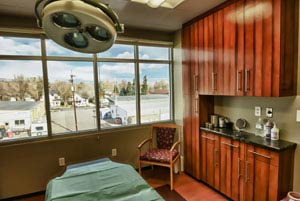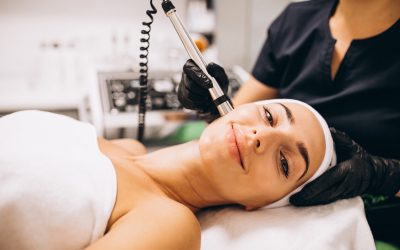For individuals struggling with acne, finding effective treatments that address both active breakouts and lingering scars can feel overwhelming. Chemical peels, often seen as a solution for overall skin rejuvenation, are gaining attention for their potential in managing acne. This article explores how chemical peels can help with acne, the types best suited for acne-prone skin, and what to expect during the treatment process.
What Are Chemical Peels and How Do They Work?
Chemical peels are skin-resurfacing treatments that use carefully formulated chemical solutions to exfoliate and remove the outer layers of the skin. These treatments are designed to address a range of skin concerns, including acne, by promoting the growth of new, healthier skin cells. The strength and depth of a chemical peel can vary, ranging from superficial peels that target the epidermis to deeper peels that penetrate the dermis, depending on the desired outcome and the patient’s skin type.
For acne-prone skin, chemical peels work by unclogging pores and removing excess oil, dead skin cells, and debris that contribute to breakouts. Ingredients like salicylic acid are particularly effective for this purpose, as they can penetrate oil-laden hair follicles, exfoliate from within, and reduce inflammation. Glycolic acid, derived from sugarcane, works by breaking down the bonds between dead skin cells, improving cell turnover and preventing pore congestion.
Additionally, chemical peels can help regulate sebum production and reduce bacteria on the skin’s surface, which are common contributors to acne. Over time, regular chemical peel treatments can also improve the appearance of acne scars and pigmentation by stimulating collagen production, which helps to restore the skin’s texture and elasticity. By addressing both active acne and its aftermath, chemical peels offer a dual-action solution that is both preventative and restorative.
The Benefits of Chemical Peels for Acne
Chemical peels provide a range of benefits for individuals dealing with acne, making them a valuable addition to many skincare routines. Unlike topical treatments that only work on the skin’s surface, chemical peels penetrate deeper layers, addressing the root causes of acne while enhancing overall skin health. Here are some key benefits of chemical peels for acne:
- Unclogs Pores: Chemical peels, particularly those containing salicylic acid, effectively clear out blocked pores by exfoliating deep within the follicle, reducing the buildup of oil and dead skin cells.
- Reduces Inflammation: Many chemical peels help to calm redness and swelling caused by acne, promoting a smoother and more even complexion.
- Targets Acne Scars: Over time, chemical peels stimulate collagen production, which can soften and diminish the appearance of both acne scars and hyperpigmentation.
- Improves Skin Texture and Tone: By exfoliating the outer layer of skin, chemical peels create a more even surface, reducing the roughness and discoloration often associated with acne-prone skin.
- Controls Sebum Production: Regular treatments can help regulate the skin’s oil production, making it harder for acne-causing bacteria to thrive.
- Prevents Future Breakouts: By addressing the factors that contribute to acne, chemical peels act as a preventive measure, reducing the frequency and severity of future breakouts.
These benefits make chemical peels a versatile and effective solution for managing acne and achieving healthier, clearer skin.
Best Types of Chemical Peels for Acne
Not all chemical peels are created equal, and choosing the right type is crucial for effectively addressing acne and its related concerns. Different peels target specific skin issues, making it essential to tailor the treatment to the individual’s skin type and acne severity. Here are the best types of chemical peels for acne:
- Salicylic Acid Peels: Ideal for oily and acne-prone skin, salicylic acid is a beta-hydroxy acid (BHA) that penetrates deep into the pores. It exfoliates within the follicle, removes excess oil, and reduces inflammation, making it highly effective for treating active acne and preventing future breakouts.
- Glycolic Acid Peels: Derived from sugarcane, glycolic acid is an alpha-hydroxy acid (AHA) that exfoliates the skin’s surface and stimulates collagen production. This peel is particularly effective for improving the appearance of post-acne scars and uneven skin tone.
- Lactic Acid Peels: Gentle yet effective, lactic acid is a great option for individuals with sensitive, acne-prone skin. It exfoliates while hydrating the skin, helping to reduce redness and irritation commonly associated with acne.
- TCA (Trichloroacetic Acid) Peels: Used for more severe acne and scarring, TCA peels penetrate deeper into the skin to resurface and rejuvenate, significantly improving texture and tone over time.
- Combination Peels: These combine multiple ingredients, such as salicylic acid and lactic acid, to address both active acne and residual pigmentation, offering a comprehensive treatment solution.
Selecting the right peel requires professional guidance to ensure optimal results tailored to your unique skin concerns.
Are Chemical Peels Suitable for Everyone?
While chemical peels offer transformative results for many individuals, they are not universally suitable for everyone. Factors such as skin type, existing skin conditions, and individual health history play a significant role in determining whether this treatment is appropriate. For those with mild to moderate acne or acne scars, chemical peels can be highly effective in reducing breakouts, improving skin texture, and minimizing discoloration. However, certain individuals may need to exercise caution.
People with very sensitive skin or active skin conditions like eczema, psoriasis, or rosacea may find chemical peels too harsh, as they can exacerbate irritation or inflammation. Similarly, individuals with darker skin tones need to carefully consider the type and strength of peel, as improper treatment can increase the risk of hyperpigmentation or uneven skin tone. Pregnant or breastfeeding individuals are typically advised to avoid chemical peels due to the potential absorption of ingredients like salicylic acid.
Additionally, those with severe or cystic acne may require a more tailored approach, as deeper peels may be necessary to achieve results, or other treatments may be recommended in conjunction with peels. Consulting with a qualified skincare professional is essential to ensure that the chosen peel aligns with the patient’s unique needs, skin type, and overall goals, minimizing risks and maximizing the benefits.
What to Expect During and After a Chemical Peel for Acne
Undergoing a chemical peel for acne involves a straightforward yet carefully monitored process designed to target problem areas while promoting skin renewal. During the treatment, a trained professional will cleanse the skin and apply a chemical solution tailored to the patient’s needs. The peel might produce a mild tingling or stinging sensation, depending on its strength, but this discomfort is typically short-lived. The procedure usually lasts about 20 to 30 minutes, making it an efficient option for those with busy schedules.
After the treatment, the skin may appear red or feel slightly sensitive, akin to a mild sunburn. Peeling or flaking generally begins within two to three days, as the outermost layer of skin starts to shed. This is a normal part of the process, revealing fresher, clearer skin underneath. It’s essential to avoid picking at the peeling skin to prevent irritation or scarring.
Post-treatment care includes moisturizing, applying sunscreen, and avoiding direct sunlight to protect the healing skin. Patients should also refrain from using harsh skincare products like retinoids or exfoliants for a few days to prevent further sensitivity. Depending on the severity of the acne and the type of peel used, results can vary, but many patients notice smoother, clearer skin within a week, with continued improvements after multiple sessions. Regular follow-ups and professional guidance ensure optimal outcomes.
Conclusion
Chemical peels can be a powerful tool in managing acne, improving skin texture, and addressing lingering scars and discoloration. By targeting the root causes of acne and promoting skin renewal, they offer a comprehensive solution for clearer, healthier skin. However, the success of a chemical peel depends on selecting the right treatment and following professional guidance. If you’re ready to explore how chemical peels can help you achieve your skin goals, visit us or call (303) 449-6666 to schedule your consultation today!





